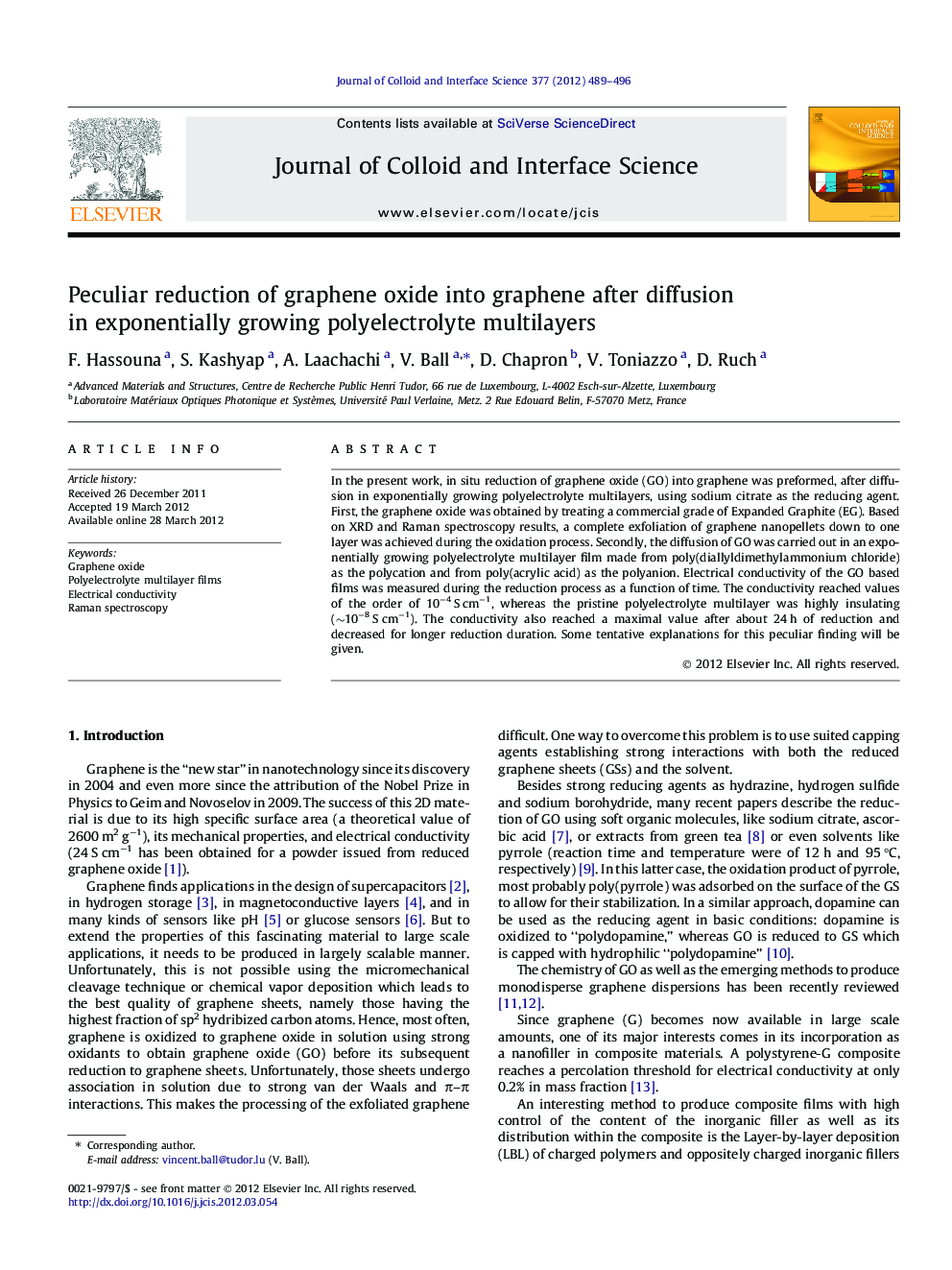| Article ID | Journal | Published Year | Pages | File Type |
|---|---|---|---|---|
| 608332 | Journal of Colloid and Interface Science | 2012 | 8 Pages |
In the present work, in situ reduction of graphene oxide (GO) into graphene was preformed, after diffusion in exponentially growing polyelectrolyte multilayers, using sodium citrate as the reducing agent. First, the graphene oxide was obtained by treating a commercial grade of Expanded Graphite (EG). Based on XRD and Raman spectroscopy results, a complete exfoliation of graphene nanopellets down to one layer was achieved during the oxidation process. Secondly, the diffusion of GO was carried out in an exponentially growing polyelectrolyte multilayer film made from poly(diallyldimethylammonium chloride) as the polycation and from poly(acrylic acid) as the polyanion. Electrical conductivity of the GO based films was measured during the reduction process as a function of time. The conductivity reached values of the order of 10−4 S cm−1, whereas the pristine polyelectrolyte multilayer was highly insulating (∼10−8 S cm−1). The conductivity also reached a maximal value after about 24 h of reduction and decreased for longer reduction duration. Some tentative explanations for this peculiar finding will be given.
Graphical abstractFigure optionsDownload full-size imageDownload high-quality image (100 K)Download as PowerPoint slideHighlights► Dynamics of polyelectrolyte multilayer films. ► Diffusion of graphene oxide. ► In situ reduction.
